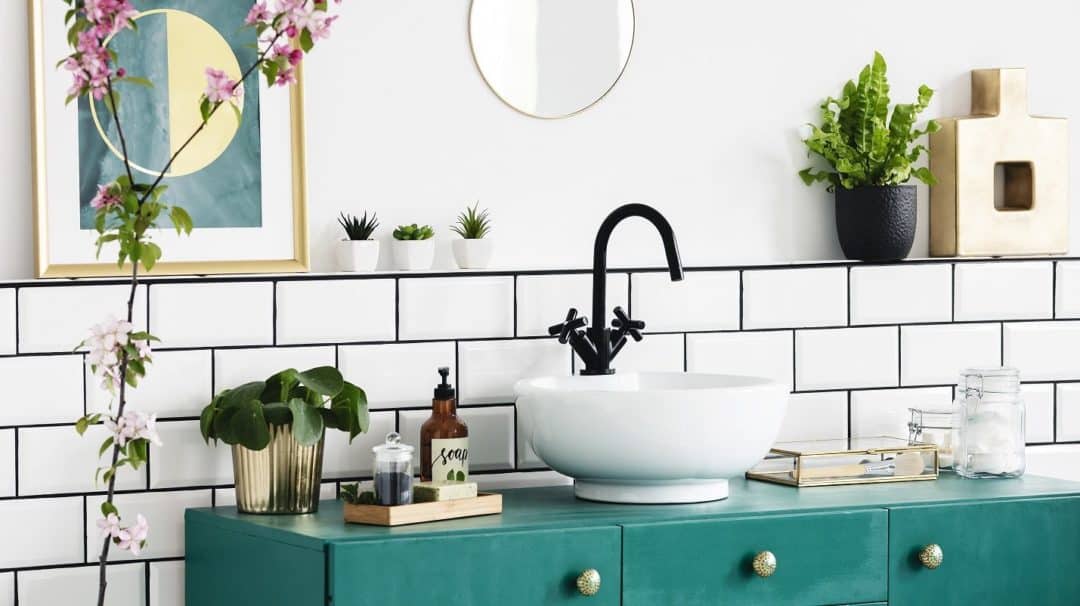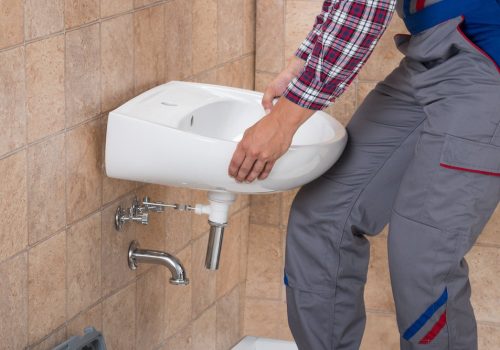Uncovering the Future of Plumbing: Patterns and Breakthroughs
Uncovering the Future of Plumbing: Patterns and Breakthroughs
Blog Article
They are making a number of great observations about The Future Of Plumbing: Trends And Technologies To Watch in general in the article underneath.

Intro
The plumbing industry is undergoing a transformative phase driven by technological innovations and growing concerns for sustainability and performance. This short article checks out emerging patterns and technologies shaping the future of plumbing.
Governing Landscape
Regulative structures play an important duty fit the adoption of plumbing developments, with criteria and codes governing everything from water efficiency to item security. As innovations continue to develop, regulatory bodies must adapt to guarantee customer defense and ecological stewardship.
Future Overview
The future of plumbing is defined by proceeded development and assimilation with other industries such as IoT, renewable resource, and structure automation. By welcoming lasting techniques, leveraging emerging modern technologies, and focusing on user-centric design, the plumbing sector is positioned to address the advancing needs of society while reducing its environmental footprint.
Increased Reality in Pipes
Enhanced Truth (AR) modern technology is changing plumbing by supplying service technicians with real-time aesthetic advice for troubleshooting and repair service jobs. AR-enabled clever glasses or mobile applications overlay electronic information onto the physical setting, aiding plumbers picture pipe layouts, identify concealed leakages, and execute repair services with accuracy.
Influence of 3D Printing
The development of 3D printing has actually introduced new opportunities in producing pipes components. From custom-designed components to detailed pipeline fittings, 3D printing allows for fast prototyping and on-demand production, lowering lead times and enabling better personalization in pipes layout.
Health and Safety Qualities
In reaction to enhanced problems for health and wellness, pipes components are including functions such as antimicrobial surface areas, touchless operation, and self-cleaning systems. These developments not just enhance health however also advertise user convenience and ease.
Hygiene-focused Fixtures
Touchless faucets, self-sanitizing toilets, and antimicrobial surfaces are ending up being increasingly widespread in domestic and commercial settings, minimizing the threat of germ transmission and promoting a cleaner, much healthier setting.
Water Quality Monitoring
Innovations in water quality tracking technologies make it possible for house owners to keep track of the pureness and security of their water supply in real-time. Smart water top quality sensing units can find impurities, pH levels, and temperature variants, encouraging users to take aggressive actions to guarantee water security.
Remote Pipes Solutions
Remote diagnostics and virtual assistance are changing the method plumbing services are supplied. With video conferencing and remote accessibility technologies, plumbing professionals can fix concerns, provide advice for do it yourself repair services, and even perform remote evaluations, offering better availability and comfort to home owners.
Obstacles and Opportunities
While plumbing developments hold tremendous guarantee, they additionally present difficulties such as data personal privacy issues, regulatory conformity, and the need for labor force training. Attending to these difficulties requires cooperation between sector stakeholders and governing bodies to ensure secure and responsible implementation of new technologies.
Smart Plumbing Systems
Including wise technology into pipes systems enables remote tracking, leakage detection, and automated maintenance. Smart sensing units and IoT (Web of Points) devices enable property owners and plumbers to keep track of water usage and identify problems in real-time, leading to much more effective source administration and positive maintenance.
Water Efficiency Solutions
With boosting focus on water preservation, cutting-edge solutions are being established to reduce water wastefulness in pipes systems. High-efficiency components, greywater recycling systems, and wise watering controllers are among the innovations aiding consumers reduce their water impact while maintaining convenience and benefit.
Lasting Materials
The shift in the direction of sustainability reaches plumbing materials, with a growing choice for eco-friendly options. Biodegradable piping products, such as PEX (cross-linked polyethylene) and HDPE (high-density polyethylene), deal toughness and resistance to deterioration without compromising environmental stability.
Predictive Maintenance
Anticipating upkeep techniques utilize information analytics and artificial intelligence formulas to prepare for and avoid pipes issues before they take place. By analyzing historical data and efficiency metrics, predictive maintenance algorithms can recognize patterns and anomalies, allowing positive interventions to prevent pricey repair work and disruptions.
Verdict
In conclusion, the future of pipes is specified by a convergence of technology, sustainability, and user-centric design. By embracing clever solutions, lasting materials, and positive maintenance methods, the pipes industry can boost efficiency, advertise security, and add to an extra sustainable future.
The Future of Plumbing: Trends and Innovations to Watch
Introduction to Future Plumbing Trends
The future of plumbing is being shaped by several key factors, including technological advancements, environmental concerns, and changing consumer expectations. These factors are driving the development of new products, services, and practices that enhance the efficiency, sustainability, and convenience of plumbing systems.
Key Trends and Innovations in Plumbing
Smart Plumbing Systems: The integration of smart technology into plumbing systems is transforming the way we manage water usage and detect issues. Smart leak detectors, automated water shut-off valves, and smart faucets are just a few examples of how technology is enhancing plumbing systems. These devices provide real-time data and remote control capabilities, allowing homeowners to monitor and manage their water usage more effectively. Water Conservation and Efficiency: With increasing concerns about water scarcity, there is a growing emphasis on water conservation and efficiency. Innovations such as low-flow fixtures, greywater recycling systems, and rainwater harvesting are becoming more popular. Plumbers are adopting these technologies to help customers reduce their water consumption and save on utility bills. Sustainable Materials: The use of sustainable materials in plumbing systems is gaining traction. This includes the adoption of recyclable and biodegradable materials, as well as the use of non-toxic and eco-friendly products. Sustainable materials help reduce the environmental impact of plumbing systems and promote long-term sustainability. Energy-Efficient Water Heaters: Advances in water heating technology are leading to the development of more energy-efficient systems. Tankless water heaters, solar water heaters, and heat pump water heaters are becoming more prevalent. These systems offer significant energy savings and reduce the carbon footprint of homes and businesses. Trenchless Technology: Trenchless technology is revolutionizing the way plumbing repairs and installations are conducted. This method allows for the repair or replacement of pipes without extensive excavation, minimizing disruption and reducing costs. Techniques such as pipe bursting and cured-in-place pipe (CIPP) lining are gaining popularity. Health and Safety: The focus on health and safety is driving innovations in plumbing systems. Touchless faucets and fixtures, antimicrobial materials, and improved water filtration systems are being developed to enhance hygiene and protect public health. Plumbers are adopting these innovations to meet the growing demand for safer and healthier plumbing solutions. Remote Diagnostics and Monitoring: The ability to diagnose and monitor plumbing systems remotely is becoming increasingly important. Remote diagnostic tools and sensors allow plumbers to identify issues and perform maintenance without the need for on-site visits. This enhances efficiency and reduces the need for costly emergency repairs. Impact of Future Trends on the Plumbing Industry
Enhanced Efficiency: The adoption of smart technology and energy-efficient systems will enhance the efficiency of plumbing systems. This will lead to reduced water and energy consumption, lower utility bills, and improved performance. Sustainability: The focus on sustainability will drive the development and adoption of eco-friendly plumbing solutions. This will contribute to the conservation of natural resources, reduction of waste, and protection of the environment. Improved Customer Experience: The integration of technology and innovative solutions will improve the customer experience. Homeowners will have greater control over their plumbing systems, access to real-time data, and the ability to manage their water usage more effectively. Increased Demand for Skilled Plumbers: The adoption of new technologies and materials will require plumbers to acquire new skills and expertise. There will be an increased demand for skilled plumbers who are knowledgeable about the latest trends and innovations. Cost Savings: The use of efficient and sustainable plumbing solutions will result in cost savings for both homeowners and businesses. Reduced water and energy consumption, lower maintenance costs, and fewer emergency repairs will contribute to overall affordability. Preparing for the Future of Plumbing
Stay Informed: Keep up-to-date with the latest trends and innovations in the plumbing industry. Attend industry conferences, participate in training programs, and engage with manufacturers to stay informed. Invest in Training: Ensure that you and your team are trained in the latest technologies and installation techniques. This will enable you to offer cutting-edge solutions to your customers and stay competitive in the market. Promote Sustainable Solutions: Highlight the benefits of eco-friendly and energy-efficient plumbing solutions to your customers. Educate them about the advantages of adopting sustainable practices and products. Leverage Technology: Embrace smart technology and remote diagnostic tools to enhance your services. Offer remote monitoring and maintenance options to provide added convenience and value to your customers. Collaborate with Manufacturers: Partner with manufacturers of innovative plumbing products to gain access to the latest solutions and technical support. This can also provide opportunities for joint marketing efforts. Focus on Customer Education: Educate your customers about the benefits and functionality of new plumbing technologies. Provide guidance on how to use smart systems and maintain sustainable plumbing solutions. Conclusion
The future of plumbing is being shaped by exciting trends and innovations that promise to enhance efficiency, sustainability, and convenience. By staying informed and embracing these changes, plumbers can provide superior services to their customers and contribute to a more sustainable future. The adoption of smart technology, sustainable materials, and energy-efficient systems will drive the evolution of the plumbing industry, creating new opportunities and challenges. By preparing for the future, plumbers can ensure their success in a rapidly changing market.

We hope you enjoyed our excerpt about Innovative Plumbing Trends Transforming Construction. Thanks a lot for taking a few minutes to read through our piece. Loved our piece of writing? Please quickly share it. Help another person locate it. We take joy in reading our article about The Future Of Plumbing: Trends And Technologies To Watch.
Book My Estimate Report this page